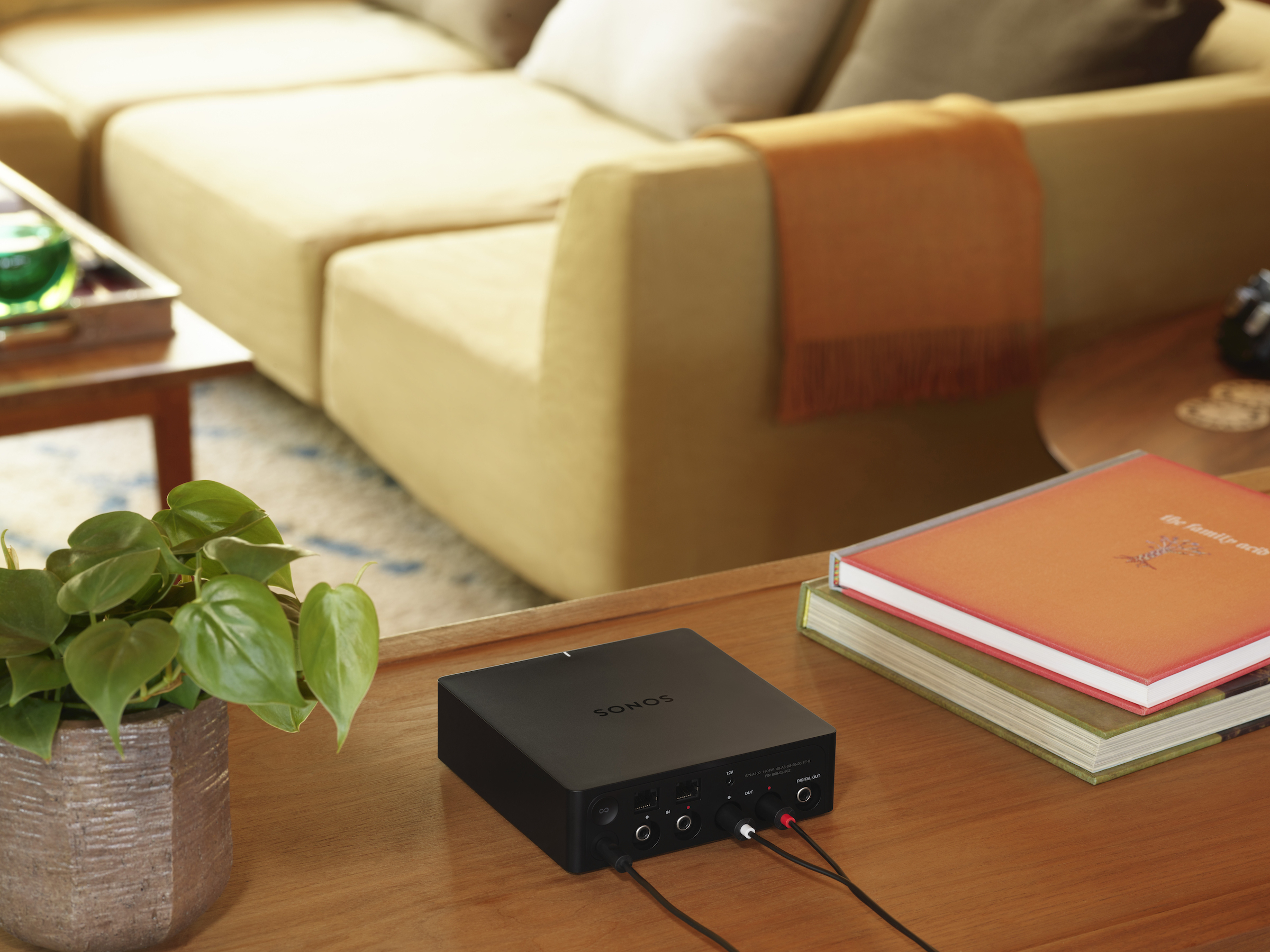Sonos has a new addition to its ecosystem for connecting in your existing stereo and AV equipment, and for adding sound out and AirPlay 2 capabilities to existing speaker setups connected via an amplifier. It’s the $399 Sonos Port, and it replaces one of the older existing devices in the Sonos lineup, the Sonos Connect, with updated specs and a smaller footprint.
The Sonos Port is a small, matte black box, which has RCA and digital coaxial audio outputs for connecting to your existing home stereo or home theatre sound system, and an RCA audio in port for connecting audio sources, including things like a turntable, projector or other AV device that may not connect so easily to something like the Sonos Beam.
Sonos Port has a built-in digitial-to-analog converter (DAC), which makes it much more attractive as an option to sound quality buffs who want to add some connected and internet-capable media playback to their existing setup. Plus, if you connect it to your amplifier, any speakers you have connected to that automatically become AirPlay 2-compatible – and it’s works with Sonos’ existing Alexa and Google Assistant integration, meaning you can use voice commands to control playback (provided you also have a Sonos or Alexa device with a mic).
The Sonos Port includes two built-in 10/100 Mbps Ethernet ports, so you can wire right into your router if you need a more reliable connection, and it has a 12V power trigger, which means it’ll automatically turn on stereo or receiver equipment when they’re connected and in standby mode.
A lot of the Port’s specs are similar to the outgoing Connect’s, but the more compact package, and its new matte black look seem much better in terms of integrated unobtrusively with your existing setup. The asking price may seem a bit steep for what is essentially a connectivity accessory, but the Sonos Connect basically replaces a DAC entirely, which can be quite expensive on its own, and uniquely provides Sonos connectivity and streaming capabilities as well.
Pre-orders for the Sonos Port begin today, and it’ll be available starting September 12 in the U.S., with a global rollout to follow early next year.
Read Full Article

No comments:
Post a Comment